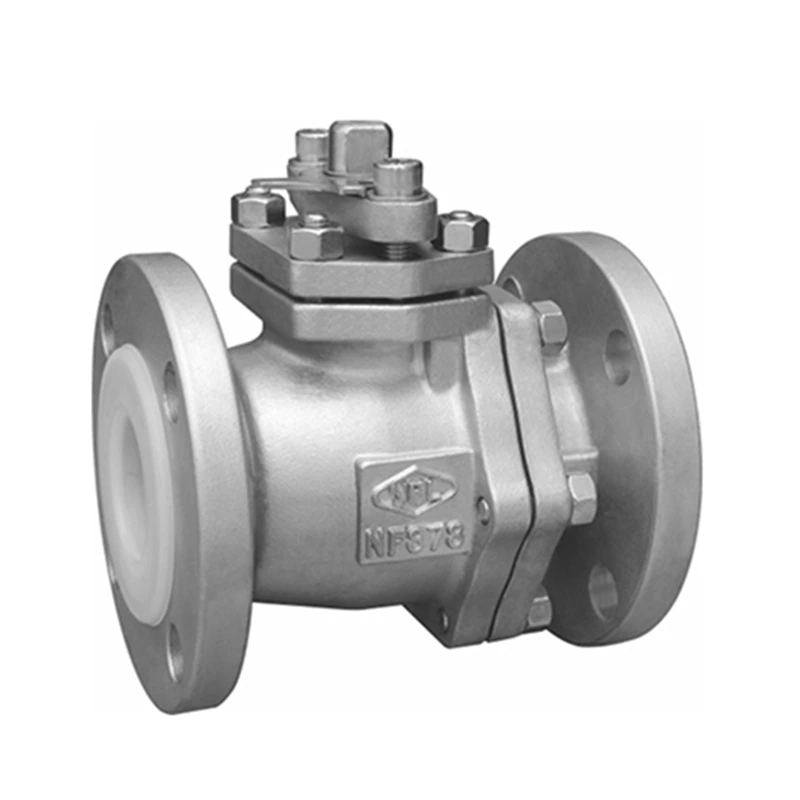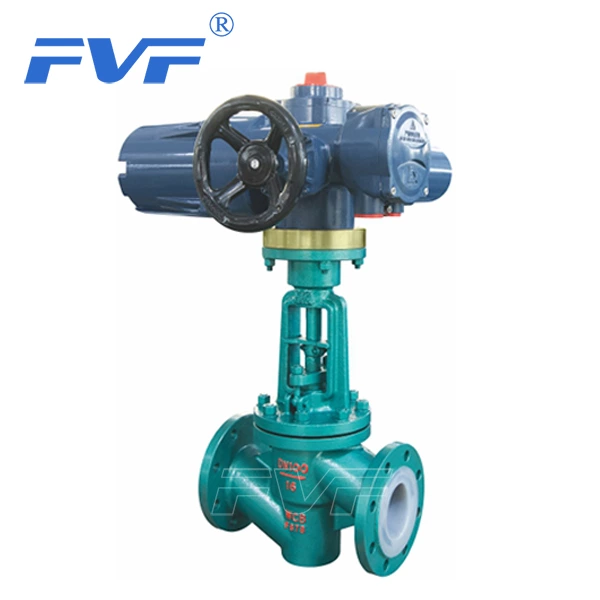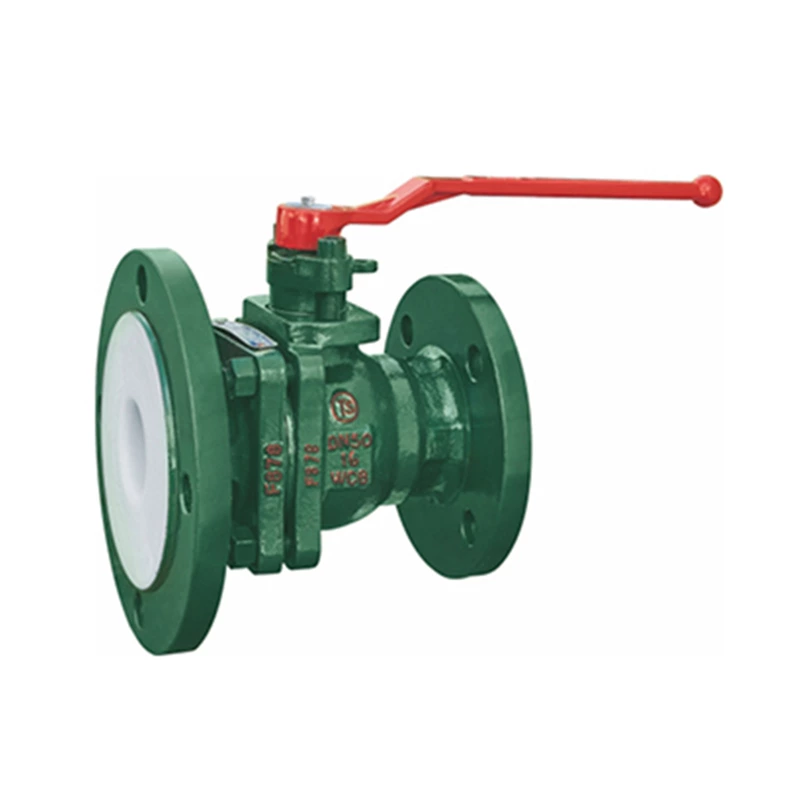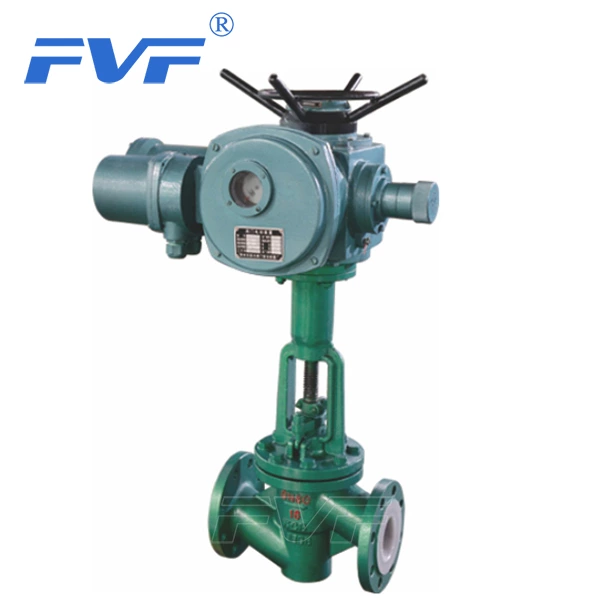Purpose And Applicable Temperature Of Fluorine-lined Ball Valve
Lined Ball Valve The inner cavity and the ball are lined with corrosion-resistant and aging-resistant polyperfluoroethylene propylene by high-pressure injection molding, so it has reliable corrosion resistance and sealing. Fluorine-lined ball valves are widely used in chemical, petroleum, metallurgy, medicine and other industrial sectors to adjust or cut off strong corrosive media such as acids and alkalis in the production process, and the effect of using them in water treatment process control is obvious.
Fluorine-lined ball valves use a ball with a circular through hole as a start and close part. The ball rotates around the center line of the valve body with the valve stem to open and close the valve. The special molding process is used to make the sealing surface dense and good, and the V-type PTFE packing combination makes the valve achieve zero leakage; the ball and the valve stem are cast as one, eliminating the possibility of the valve stem rushing out of the pressure-bearing part due to pressure changes, and fundamentally ensuring safety in use; the full plastic lining process is used to resist strong corrosion from the medium.
Fluorine-lined ball valves are professionally designed to control the opening and closing of various highly corrosive media. They are widely used in the petroleum, chemical, dyeing, pesticide, acid and alkali production industries and are currently the ideal choice for anti-corrosion valves.
The main lining material of fluorine-lined ball valves is fluoroplastics [1]:
Perfluoroethylene FEP (F46)
Applicable media:
Any organic solvent or reagent, dilute or concentrated inorganic acid, alkali, ketone, aromatic hydrocarbon, chlorinated hydrocarbon, etc.
Using temperature of fluorine-lined ball valve:
-85~150
Features: The mechanical, electrical properties and chemical stability are basically the same as F4, but the outstanding advantage is the high dynamic toughness, excellent weather resistance and radiation resistance.
Polytrifluoroethylene PCTEF (F3)
Applicable media editor
Various organic solvents, inorganic corrosive liquids (oxidizing acids)
Using temperature: -195~120
Features: heat resistance, electrical properties and chemical stability are second only to F4, mechanical strength, creep properties, and hardness are better than F4
Polypropylene: RPP
Applicable media: aqueous solutions of inorganic salts, dilute or concentrated solutions of inorganic acids and alkalis.
Using temperature: -14~80
Features: One of the lighter plastics, its yield, tensile and compressive strength, and hardness are better than low-pressure polyethylene, with outstanding rigidity, good heat resistance, easy molding, and low cost. After modification, it has better dynamic resistance, fluidity, and bending elasticity.
Polyvinyl chloride: Rigid) PVC
Applicable media: water resistance, concentrated alkali, non-oxidizing acid, chain hydrocarbon, oil and ozone, etc.
Operating temperature: 0-55
Features of fluorine-lined ball valve: high mechanical strength, excellent chemical stability and dielectric properties, good oil resistance and aging resistance, easy to weld
and bond, low price.
Polytetrachloroethylene PTFE (F4)
Using medium: strong acid, strong alkali, strong oxidant, etc.
Using temperature: -200~180
Features: It has excellent chemical stability, high heat resistance, cold resistance, low friction coefficient, and is an excellent self-lubricating material, but has low mechanical properties, poor fluidity, and large thermal expansion.
Polyvinylidene chloride PVDF (F2)
Using medium: resistant to most chemicals and solvents,
Using temperature: -70~100
Features: The tensile strength and compression strength are better than F4, resistant to bending, weathering, radiation. Light and aging, etc., the biggest feature is good toughness and easy molding.
Polyolefin: PO
Applicable medium: various concentrations of acids, alkalis, salts and certain organic solvents.
Operating temperature: -58~80
Features: It is the world's ideal anti-corrosion material and has been widely used in large-scale rotationally molded equipment and pipeline linings







